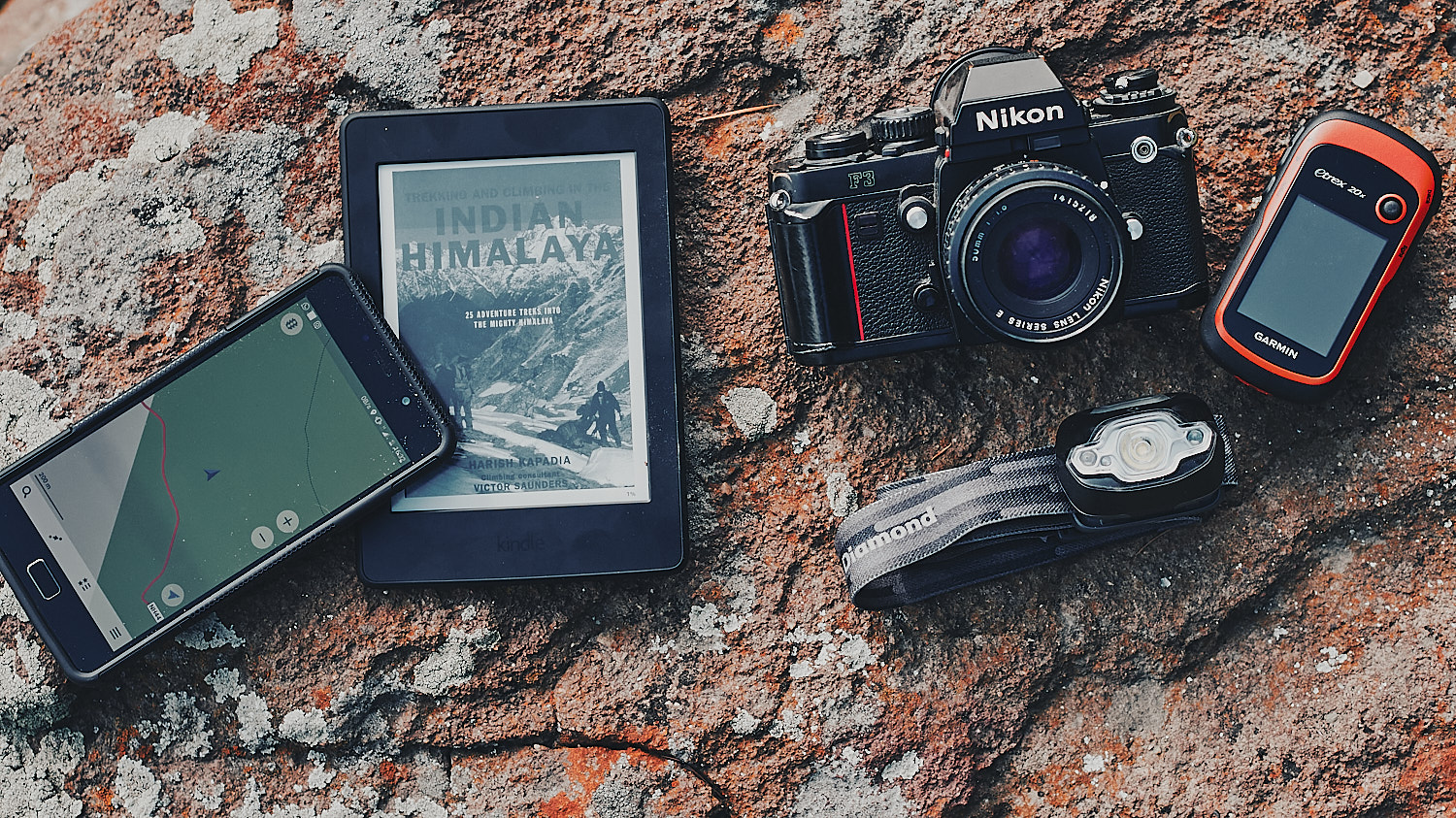My outdoor photography gear

A lot of readers have asked me to share my photo gear and what I carry in my camera bag. So I’ve decided to throw open my camera bag and explain why I own, what I own.
Table Of Contents
- Detail Monster – Sigma DP2M
- Rugged Tank – Nikon F3
- Everyday workhorse – Micro 4/3 – Olympus OMD-M5 Mk 2
- Tripod – Manfrotto 190 DB/AmazonBasics 50 inch
- Lens Filters – B+W
- Vanguard Lens Cleaner
- Related
P.S. I own every piece of the gear in this article. I do not recommend gear that I have not bought or tested extensively.
Detail Monster – Sigma DP2M
The highest image quality from any camera this side of a 36MP+ DSLR or Medium format camera or back. No mincing words. That’s what I see. — Michael Reichmann, Editor, Luminous Landscape – Sigma DP2M review
Introduced in 2012, the Sigma DP2M is a fixed lens compact camera that blows away full-frame cameras when it comes to image quality. It can hold its own amongst most medium format backs. If the highest image quality in a diminutive package is your only criteria, and you print your photographs big (more than 2 feet) then this is the camera for you.
Rugged Tank – Nikon F3
My Nikon F3. Note the brassing on the side and a minor dent on top of the pentaprism. The dent on the pentaprism was a result of a 4-foot drop on hard concrete. Such ruggedness is hard to get in any current DSLR.
Nikon F series cameras have a well-deserved reputation for quality. They are all extremely well made and have shutters that will last forever (150,000 cycle MTBF). All have DOF preview, MLU, 100% finders, and interchangeable prisms and screens. — photo.net
I never had a single problem with a Nikon F3. I have dropped it from waist height on a concrete slab and it still works. It functioned flawlessly in the Arctic circle where the temperature often dipped below -35 C. Built-in 1980 and guaranteed for 150,000 shutter actuation. It was Nikon’s swan song in the pre-autofocus era. Full frame, rugged, reliable and with a battery that goes on for years, it’s perfect! It also has the enviable reputation of being one of the few cameras that have been to space and back.
F3 Lenses
- Macro – Micro Nikkor 55mm F 3.5 circa 1975.
- Prime – Nikon Series E 50mm F 1.8 pancake circa 1980
- Ultra-Wide – Tokina 20-35 F 3.5-4.5
Everyday workhorse – Micro 4/3 – Olympus OMD-M5 Mk 2
The problem with APS-C format cameras is that their lenses are not much smaller than a full-frame camera. On the other hand, a compact usually comes with a diminutive sensor and therefore, mediocre image quality. Micro 4/3 occupies a middle ground between compacts and a full-frame camera. Its sensor is huge compared to most compacts while its lenses are small and pocketable. Olympus and Panasonic are committed to this format and between them, you can get any camera body or lens you desire.
Micro 4/3 Lenses
- Prime – Panasonic 20mm F1.7 (now version 2)
- Mild telephoto – Olympus 45mm F1.8
- Super wide – Olympus 9-18mm F4-5.6
- Micro 4/3 to Nikon adapter, that allows me to use all my Nikon lenses on the Panasonic camera Other recommended Micro 4/3 lenses .
Tripod – Manfrotto 190 DB/AmazonBasics 50 inch
Built like a tank and stable under the most extreme conditions, Manfrotto tripods are renowned for their build quality and the 10-year old tripod is no exception. From the arctic circle to the Sahara, this tripod has never let me down. Weighing in at 3 kilograms, it is not an ideal companion for long or arduous treks. For most treks, I choose to carry a small AmazonBasics tripod that weighs around 500 grams.
Lens Filters – B+W
I have experimented with Hoya, Tiffen and Polaroid filters but I always come back to B+W. Made in Germany, these filters are expensive. Nevertheless, in all eventuality they will outlast your camera/s and therefore, it is a worthwhile long term investment. The quality of glass the B+W uses is much better than any of the filters mentioned above and the filter rings are made of brass. I have used B+W filters for the past 8 years on treks and they show negligible wear and tear.
Vanguard Lens Cleaner
- Lens cleaner – Vanguard. An expensive professional lens is only good if it’s spot-free. Unless you have a sadomasochism urge to remove dust spots from photographs in post-process, keep your lenses dust-free with this trifling do-hickey. Buy on Amazon India.
Related
If you think outdoor photography is just about the gear - [then this post is for you] ({% post_url 2017-02-12-The-Road-To-A-Better-Outdoor-Photographer %}).


